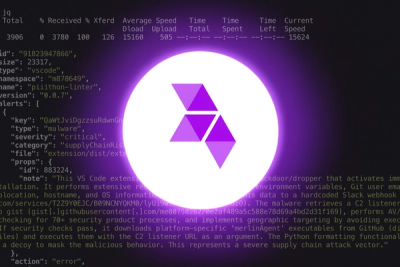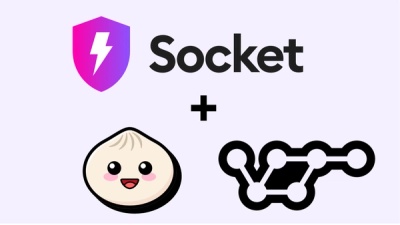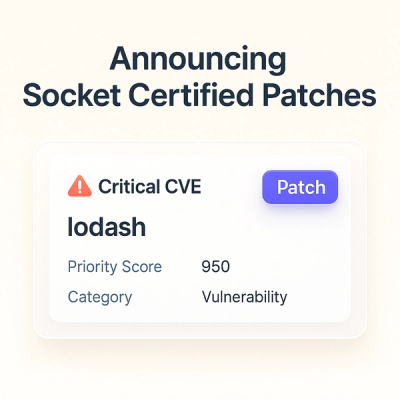
Product
Introducing Socket Scanning for OpenVSX Extensions
Socket now scans OpenVSX extensions, giving teams early detection of risky behaviors, hidden capabilities, and supply chain threats in developer tools.
create-cycle-app-flavors
Advanced tools
Flavors allow generating starting projects to fulfil specific needs. They can be published to npm, or being used locally via the create-cycle-app CLI.
When creating a project, you can inform which flavor you want to use with the --flavor flag:
$ create-cycle-app <name> --flavor <flavor>
Some examples of how a flavor could be specified:
$ create-cycle-app my-app --flavor cycle-scripts-one-fits-all
$ create-cycle-app my-app --flavor cycle-scripts-one-fits-all@x.y.z
$ create-cycle-app my-app --flavor path/to/cycle-scripts-one-fits-all
| Flavor | Language | Bundler | CLI compatibility | Status |
|---|---|---|---|---|
| cycle-scripts-one-fits-all | TypeScript or ES6 | Webpack2 | v3 | ✅ Active |
| cycle-scripts-ts-webpack | TypeScript | Webpack1 | v2 | :no_good_man: Deprecated |
| cycle-scripts-ts-browserify | TypeScript | Browserify | v2 | :no_good_man: Deprecated |
| cycle-scripts-es-browserify | ES6 | Browserify | v2 | :no_good_man: Deprecated |
A flavor is a npm module with a set of scripts and template files that are used to configure a new Cycle.js project.
Take a look at cycle-scripts as an example.
.
├── index.js
├── package.json
├── scripts
│ ├── build.js
│ ├── init.js
│ ├── start.js
│ ├── eject.js
│ └── test.js
└── template
├── gitignore
├── public
│ ├── favicon.ico
│ └── index.html
└── src
├── app.js
├── app.test.js
└── index.js
4 directories, 13 files
package.json is used to declare dependencies for this particular flavor, that acts as devDependencies to the target project. It declares the cycle-scripts command script (generally index.js), from where each underlying scripts is called.
index.js is the entry point for each command exposed to the target project. It could be really simple, just calling the next script file without ceremony.
scripts/ directory holds each script used in the project. The start.js script is used to start a development server. test.js, as the name suggests, call the test tool. build.js is used to bundle the target project to a deliverable set of files, production-ready. eject.js is mostly a copy-and-paste tool, that adapts the target project to reproduce the same commands from the flavor. Last, but not least, init.js is the script called by create-cycle-app command, in order to install development dependencies and copy initial files.
templates/ directory holds template files for the target project. This is optional, and unlike other files, could have any structure you desire.
Each flavor has great freedom to choose it's own dependencies, configuration, tools and file structure, as the user will choose which is the best (desired) flavor.
FAQs
## Usage
The npm package create-cycle-app-flavors receives a total of 0 weekly downloads. As such, create-cycle-app-flavors popularity was classified as not popular.
We found that create-cycle-app-flavors demonstrated a not healthy version release cadence and project activity because the last version was released a year ago. It has 1 open source maintainer collaborating on the project.
Did you know?

Socket for GitHub automatically highlights issues in each pull request and monitors the health of all your open source dependencies. Discover the contents of your packages and block harmful activity before you install or update your dependencies.

Product
Socket now scans OpenVSX extensions, giving teams early detection of risky behaviors, hidden capabilities, and supply chain threats in developer tools.

Product
Bringing supply chain security to the next generation of JavaScript package managers

Product
A safer, faster way to eliminate vulnerabilities without updating dependencies